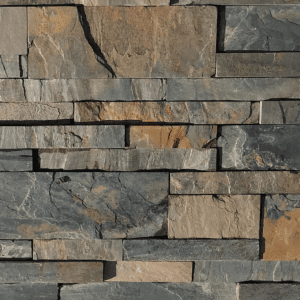8 Essential Tips for Selecting the Perfect Ledgestone

Ledgestone is a popular choice for outdoor living spaces like patios, walkways, and fireplaces due to its natural appearance and durability. However, buying the right ledgestone can be tricky since there are many options to choose from. This article will provide you with 8 tips to help you select and purchase high-quality Ledgestone.
Inspect Samples In-Person
Inspecting ledgledge stone stone samples in person is crucial before making your purchase. Since ledge stone exists in many colors, textures, and styles, it’s impossible to accurately discern the variations through pictures alone. You need to see real samples up close under natural lighting conditions to make an informed decision. When visiting potential ledge stone suppliers, be sure to ask if you can inspect physical samples on-site. Take your time examining each sample’s thickness, subtle differences in color tones, surface textures, and overall aesthetic qualities. See how the light plays across the stone to understand how it will look when installed. Careful in-person inspection of multiple samples allows you to visualize which ledge stone will complement your project space best as well as fit within your budget. Don’t finalize an order until you’ve thoroughly scrutinized samples with your own eyes.
Consider the Installation Area
The specific location where you intend to install the ledgestone is an important factor to consider, as it will affect which type of stone is best suited. Different environmental conditions and usage levels mean not all ledgestone options will be equally durable or practical. If installing near a swimming pool, for instance, a more slip-resistant variety should be chosen for safety. The stone will be exposed to more moisture. Likewise, a fireplace surround requires ledgestone capable of withstanding higher heat levels without cracking or damage. Outdoor spaces like patios experience greater exposure to weathering from rain, sun, and other elements over time. The amount of foot traffic an area receives and potential for staining should also be taken into account. Higher traffic or messy areas may demand a more durable, dense stone composition. By considering installation location specifics like these, you can select ledgestone built to last in its intended environment.
Check the Ledgestone Thickness
When choosing the thickness of your ledgestone, it’s important to consider how it will be used and your budget. Ledgestone comes in a variety of thicknesses, generally ranging from 1 to 3 inches. Thinner stone that is 1 inch or less is more affordable up front. However, over time it is less durable and more prone to cracking, chipping, and breaking down faster when exposed to traffic and weather. For high traffic areas like patios and walkways, opt for a minimum thickness of 1.5 inches. Thicker stone that is 2 inches or more will stand up much better to the wear and tear of regular use. It also creates a more substantial visual appearance. While thicker stone does cost more initially, it is worth the investment for areas that will see lots of foot traffic over many years. Consider your budget, but don’t compromise on quality by choosing stone that is too thin for its intended application.
Inspect for Consistency
When inspecting ledgestone samples, pay close attention to the consistency in color, texture, thickness and overall appearance within the same lot or run. While no two pieces of natural stone will ever be identical, you want to ensure the variations between stones are relatively minor. Significant differences, such as some pieces being much darker or lighter than others, having vastly different textures or sizes, can cause the installed stonework to look uneven, mismatched and lack uniformity. Consistency is important for an attractive, professional look. Be sure to ask the supplier if they can provide ledgestone from a single lot or run for your entire project, rather than mixing stone from multiple sources, to minimize the risk of inconsistencies. Examining consistency upfront helps you select stone that will install smoothly and appear seamless.
Consider the Ledgestone Cut
Ledgestone is available in different cuts that influence its appearance and texture. Flat-cut stone has a smooth, flat front and back for a polished look. Profile-cut stone has a textured, dimensional front surface but smooth back for visual appeal without compromising flat installation. Random-cut stone has an organic, rugged texture on all sides mimicking naturally weathered rock. Consider whether you want a refined, flat look or a more rustic aesthetic, and how the stone will be used. Random-cut often makes the best choice for outdoor, rustic spaces. Meanwhile, profile-cut offers visual depth while maintaining practicality.
Ask About Sealers and Sealants
Many ledgestone suppliers will recommend applying a sealer or sealant after installation. These products protect the stone from stains and help prevent water absorption that can cause cracking or spalling. Ask the supplier about their sealer recommendations for the specific ledgestone you select. Reapply sealers periodically as directed to maintain the stone’s appearance over time. Proper sealing is important for ledgestone used in high-traffic or wet areas.
Inquire About Warranties
Reputable ledgestone suppliers stand behind the quality of their products. Ask what type of warranty they provide in case any stones are damaged or defective. Warranties may cover cracks, chips, fading, or other issues. They provide reassurance that the supplier will make things right if problems arise within the coverage period. Warranties are especially valuable for large projects or stone used near pools or in other demanding applications.
Get Multiple Estimates
Ledgestone costs can vary depending on suppliers, stone types, project details, and installation requirements. Get written estimates from at least 3 different companies to compare pricing. Look at the estimates side by side to analyze inclusions and exclusions. Consider factors like material costs, delivery fees, installation services, and warranties. Don’t automatically choose the lowest bid—check references and reviews as well. With competitive bids in hand, you can make an informed purchase decision.
Conclusion
Following these 8 tips will help you select the right stacked stone for your project needs and budget. Inspecting samples, considering installation factors, checking stone thickness, and getting estimates are important steps. Asking suppliers about consistency, cuts, sealers, and warranties provides valuable information. Taking the time for research upfront leads to a quality ledgestone installation you’ll enjoy for many years.
Leave a reply
You must be logged in to post a comment.











